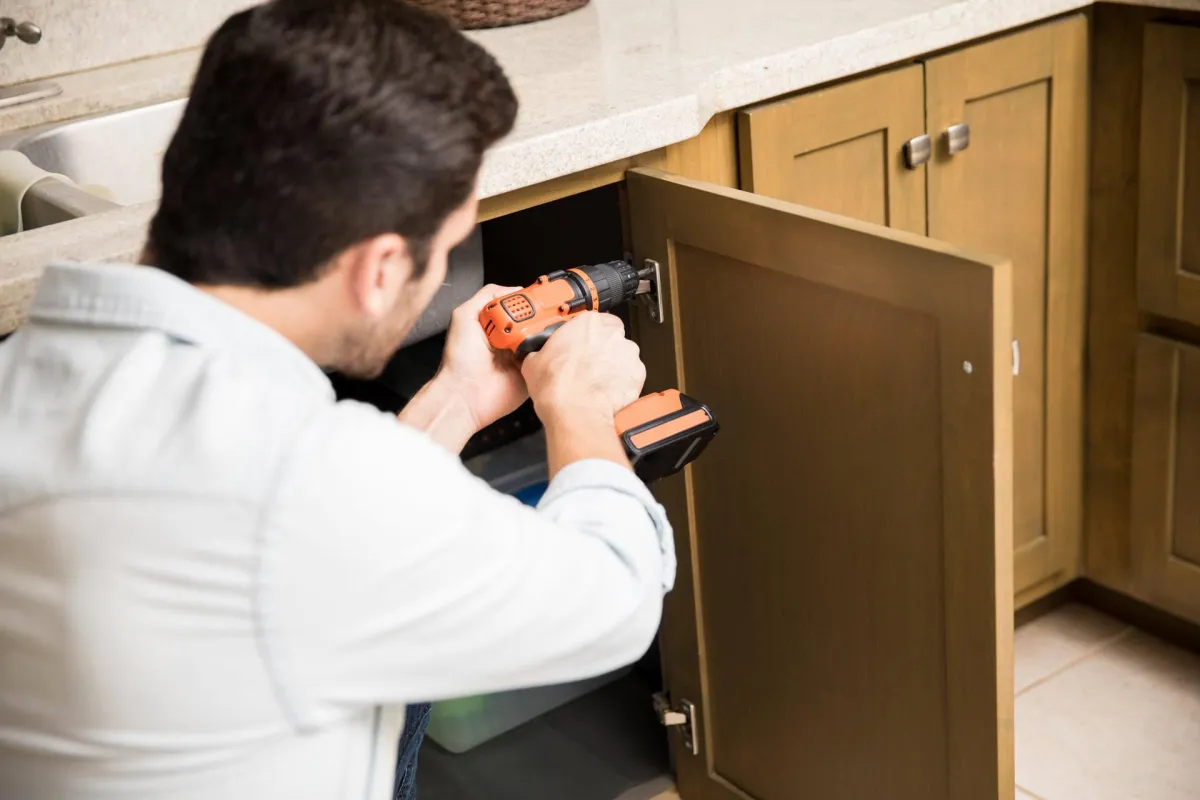
Cabinet Refacing vs. Replacement: Which Option Saves More Money?
Introduction
If your kitchen cabinets are starting to look worn or outdated, you may be asking yourself: should I reface or replace them? It’s one of the most common remodeling decisions homeowners face—especially in the Dallas–Fort Worth area, where kitchen upgrades are a top priority for increasing home value.
Both cabinet refacing and replacement can transform your kitchen, but they come with different costs, timelines, and results. Understanding which option fits your needs (and your budget) can help you make the smartest decision for your home.
This guide breaks down the key differences between cabinet refacing and cabinet replacement—what each involves, how much they cost, and which one gives you the best return for your money.
What’s the Difference Between Cabinet Refacing and Replacement?
Cabinet Refacing
Cabinet refacing means keeping your existing cabinet boxes but giving them a brand-new exterior look. Remodelers replace the doors, drawer fronts, and hardware, then apply a new veneer or finish to the face frames and exposed surfaces.
It’s ideal if:
Your current cabinet boxes are still strong and structurally sound.
You’re happy with your existing kitchen layout.
You want a fast, cost-effective upgrade that looks brand new.
Refacing typically takes three to five days and causes minimal disruption to your kitchen routine.
Cabinet Replacement
Cabinet replacement is a full renovation approach. It involves removing your existing cabinetry and installing entirely new units—allowing you to redesign the layout, change materials, and upgrade functionality.
It’s ideal if:
Your cabinet boxes are damaged, warped, or outdated.
You want to redesign your kitchen layout completely.
You’re planning a full kitchen remodel rather than just a refresh.
Replacement offers more customization but requires a larger investment and longer project timeline.
Cost Comparison: Refacing vs. Replacement
Before choosing, it helps to look at the typical cost range for each option.
Cabinet Refacing Costs
In the Dallas–Fort Worth market, cabinet refacing generally costs between $6,000 and $15,000, depending on kitchen size and finish materials. High-end veneers like wood or specialty laminates may increase that range slightly.
Key cost factors:
Material type (laminate, wood veneer, thermofoil)
Hardware quality (hinges, pulls, and handles)
Door and drawer style (shaker, raised panel, slab)
Cabinet Replacement Costs
Full cabinet replacement usually starts around $15,000 for stock cabinets and can reach $30,000 or more for custom designs. Labor, installation, and potential layout changes can significantly increase total costs.
Key cost factors:
Cabinet material and customization level
Modifications to layout or plumbing
Countertop and backsplash updates during installation
The Bottom Line on Savings
On average, refacing saves homeowners 30–50% compared to full replacement. For kitchens with sturdy cabinet frames, refacing offers nearly the same aesthetic impact at a fraction of the cost.
How to Decide: Is Refacing or Replacement Better for You?
Choosing between refacing and replacement comes down to three main factors: condition, design goals, and budget.
Step 1: Evaluate Cabinet Condition
Inspect your cabinet boxes for signs of damage, mold, or warping. If the boxes are solid and level, refacing is a reliable, budget-friendly solution. If not, replacement is the safer long-term investment.
Step 2: Clarify Your Design Goals
Ask yourself how much you want to change your kitchen’s layout and style. If your layout still works but the look is outdated, refacing makes sense. If you’re planning new appliances, island additions, or layout changes, full replacement may be necessary.
Step 3: Consider Project Timeline
Refacing typically takes less than a week. Replacement can take three to six weeks, especially if plumbing or electrical work is involved. Homeowners who want a fast transformation often choose refacing for convenience.
Step 4: Compare Return on Investment (ROI)
Both refacing and replacement improve resale appeal. However, refacing often delivers higher ROI in proportion to cost since it achieves a high-impact visual upgrade with less expense.
Pros and Cons Overview
Cabinet Refacing
Pros
More affordable than replacement
Faster completion (3–5 days)
Less waste and disruption
Environmentally friendly reuse of existing boxes
Cons
Can’t change layout or structure
Won’t fix damaged cabinet boxes
Limited to existing box configuration
Cabinet Replacement
Pros
Complete design freedom
Can add new cabinets, islands, or layouts
Opportunity to fix underlying damage
Cons
Higher cost
Longer project timeline
Requires more extensive demolition and cleanup
FAQs About Cabinet Refacing and Replacement
How long do refaced cabinets last?
With proper maintenance, refaced cabinets can last 15–20 years—almost as long as new ones. The lifespan depends on the quality of materials and installation.
Can refaced cabinets look as good as new?
Yes. High-quality veneers and updated hardware can make refaced cabinets indistinguishable from new installations when done professionally.
Is refacing an option for damaged or warped cabinets?
No. If the cabinet boxes are compromised, full replacement is the better option to ensure structural integrity.
Can I reface cabinets that were previously painted or stained?
Yes, as long as the underlying material is solid. The surface will be sanded and prepared before applying the new veneer.
Which adds more value to my home—refacing or replacement?
Replacement adds slightly more resale value, but refacing offers a higher percentage of ROI due to lower costs. For many DFW homeowners, refacing strikes the ideal balance.
Conclusion
When deciding between cabinet refacing and replacement, the right choice depends on your cabinets’ condition, your design goals, and how much you’re comfortable investing.
If your cabinet frames are still solid, refacing provides a fresh, high-end look while saving thousands of dollars. But if your kitchen layout or structure needs major updates, replacement delivers more flexibility and long-term durability.
In the Dallas–Fort Worth area, where kitchen remodeling is a top home upgrade, both options can transform your space and boost your property value—so choose the path that best fits your home’s needs and your budget.